Find the programme that meets your requirements and aspirations.
Apply nowEvents
Design Thinking Exhibition
June 13, 2024

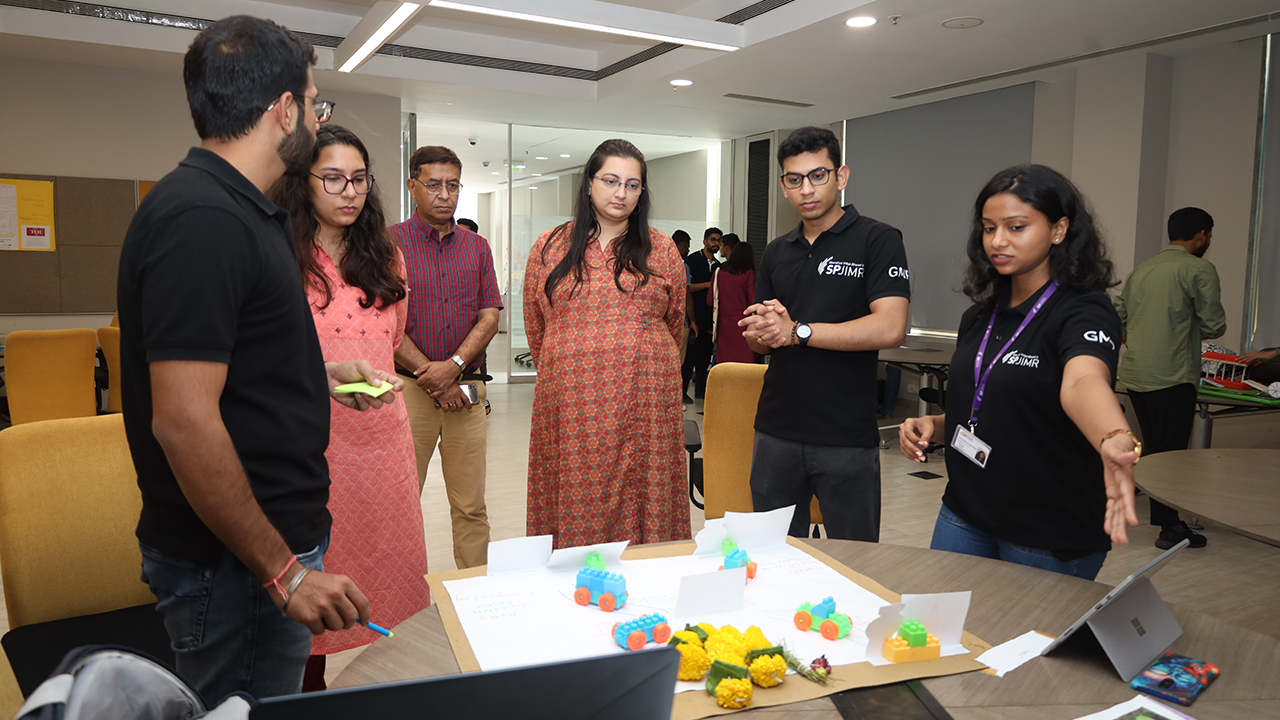

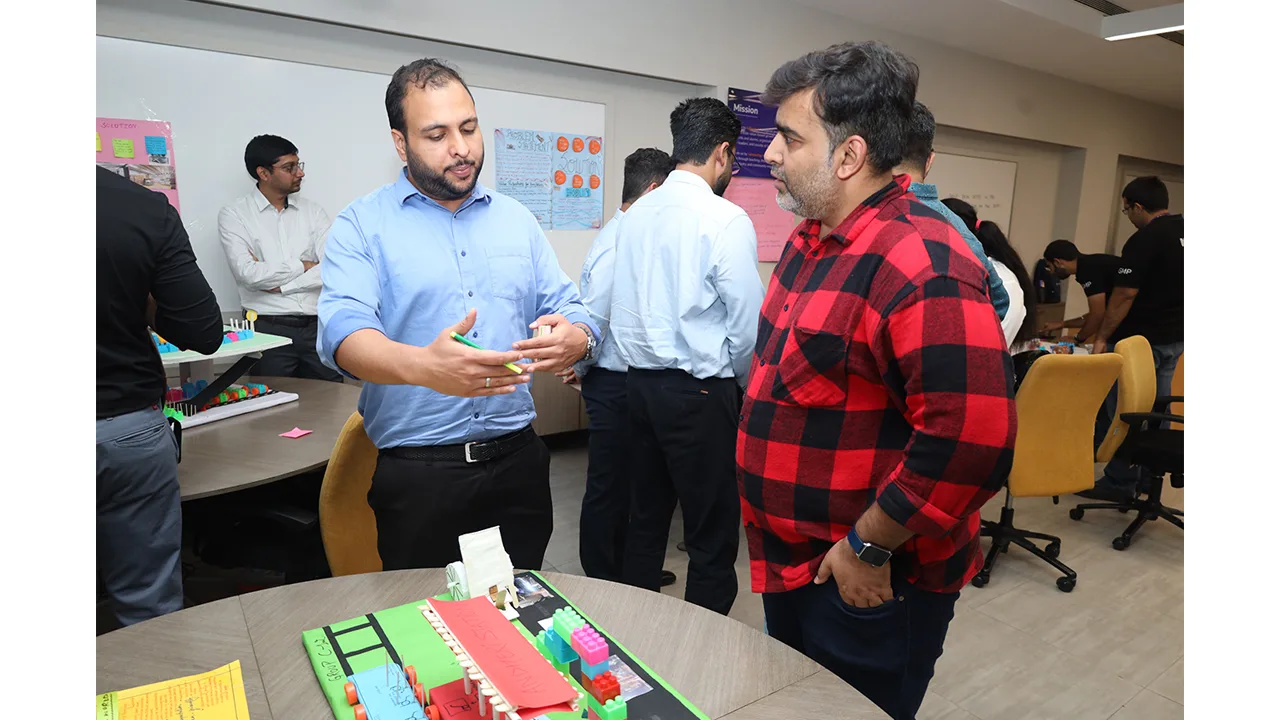
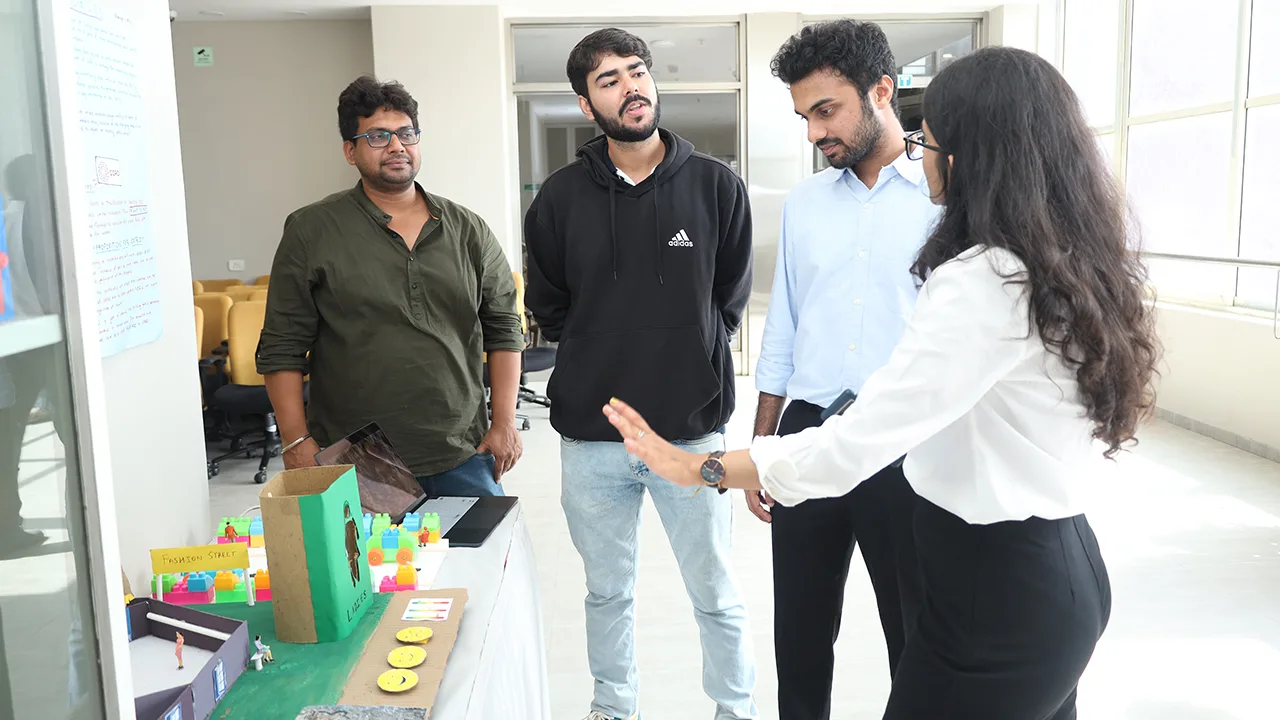
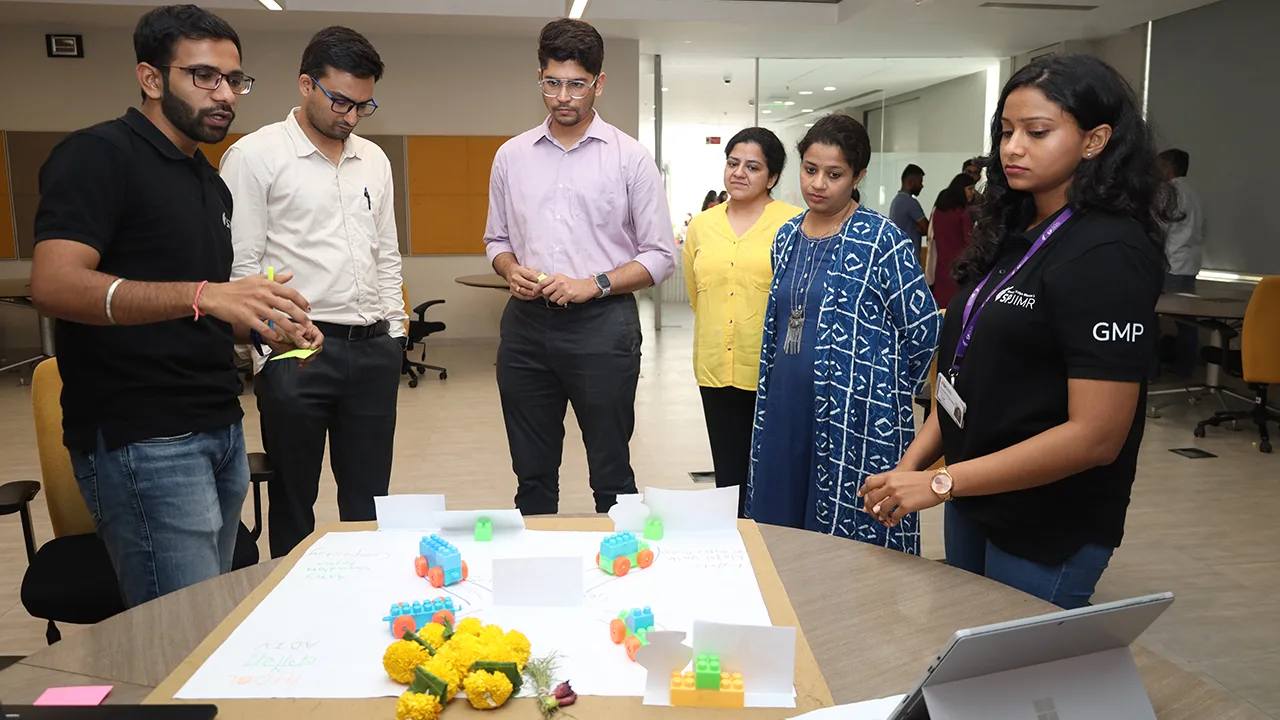
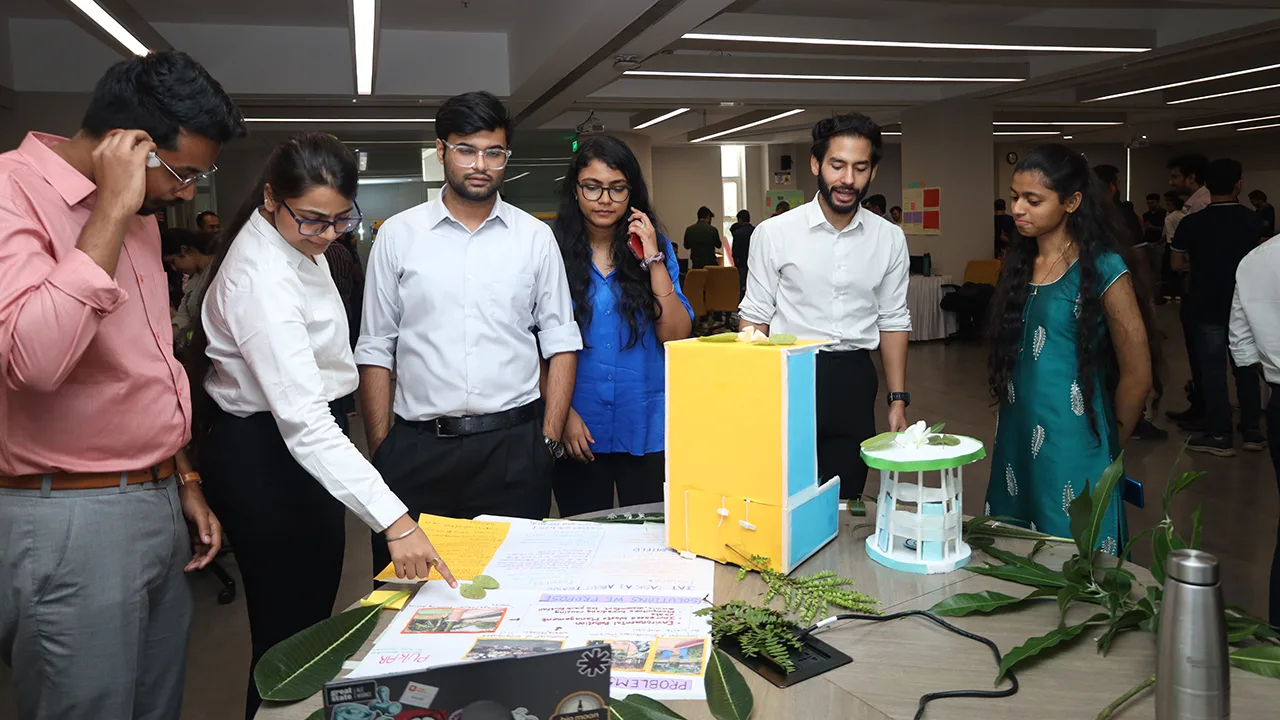
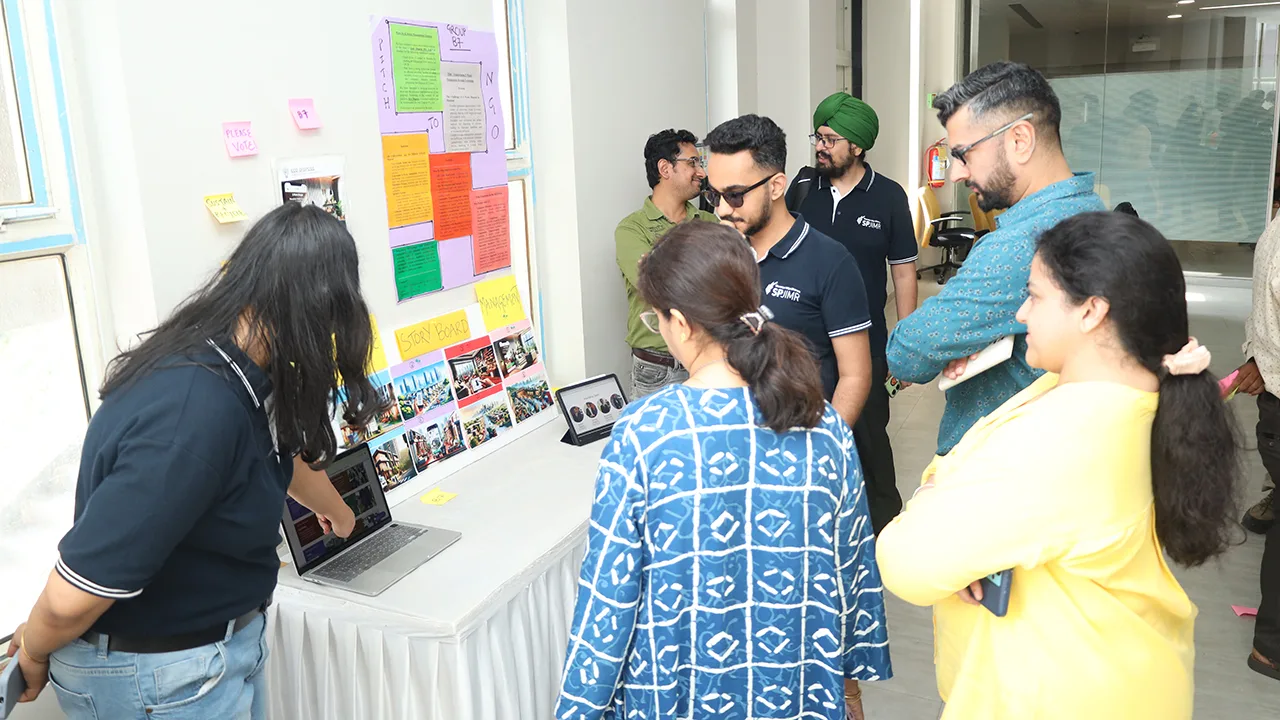
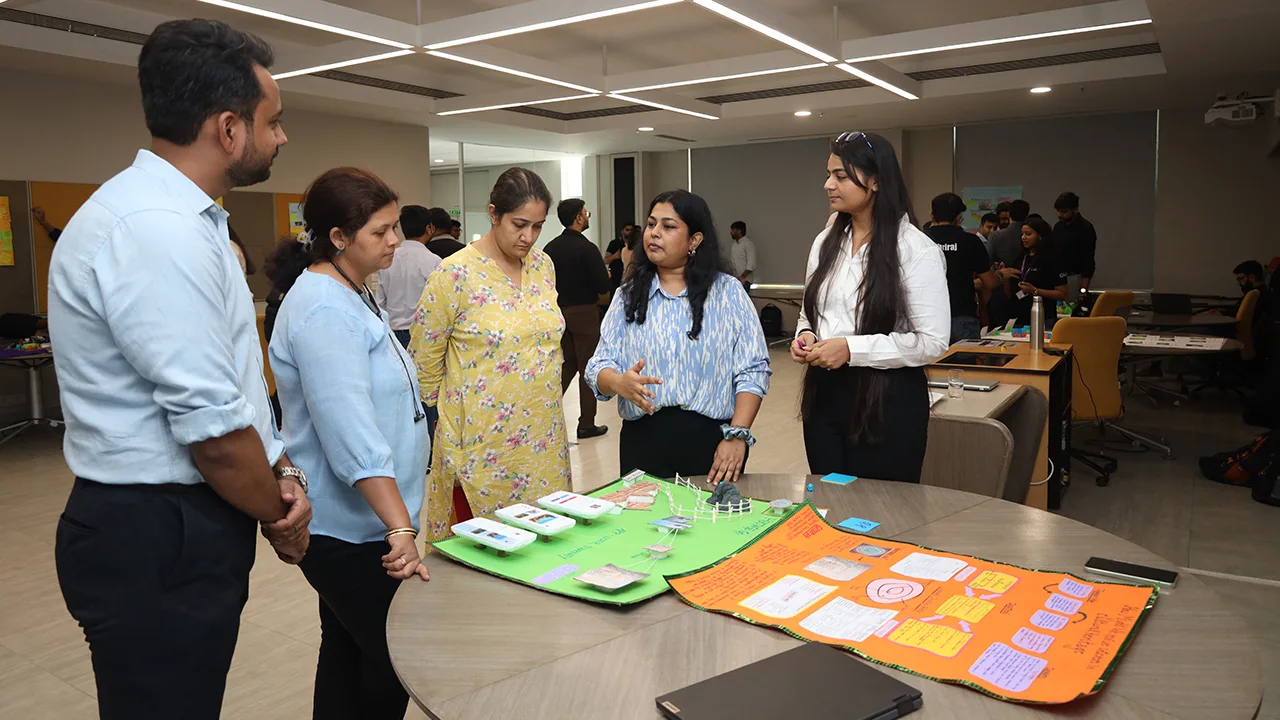
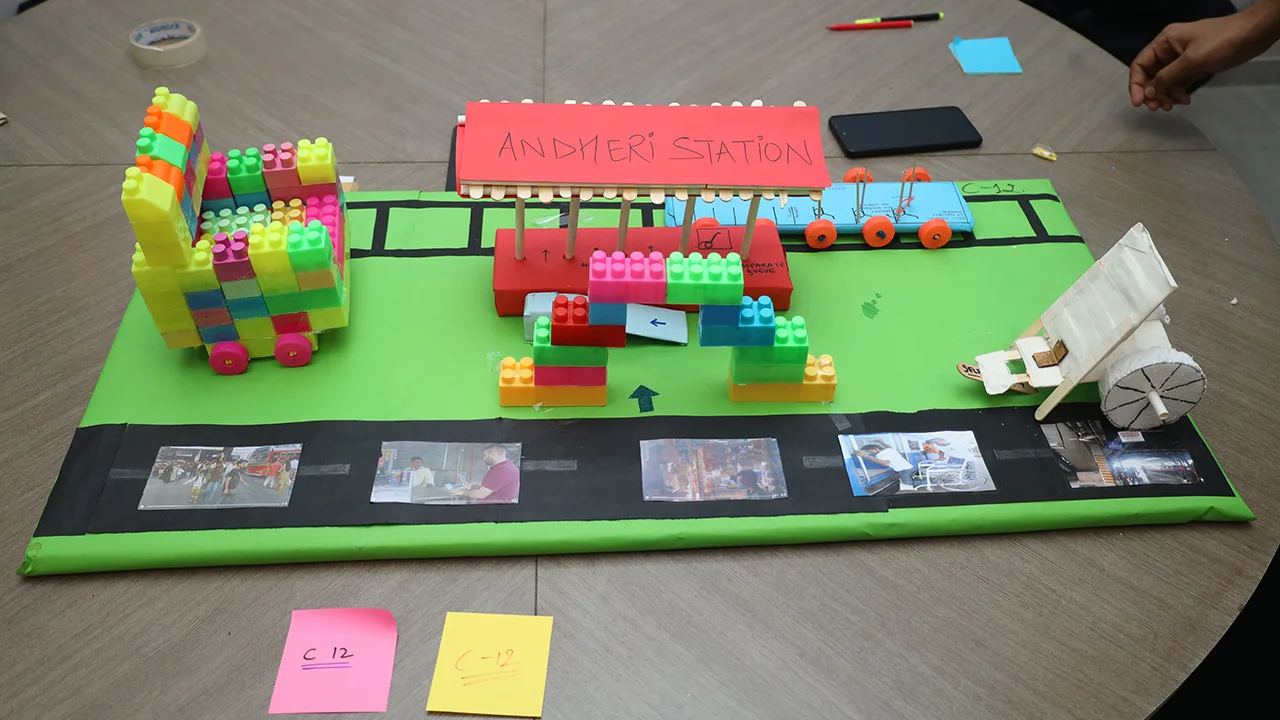
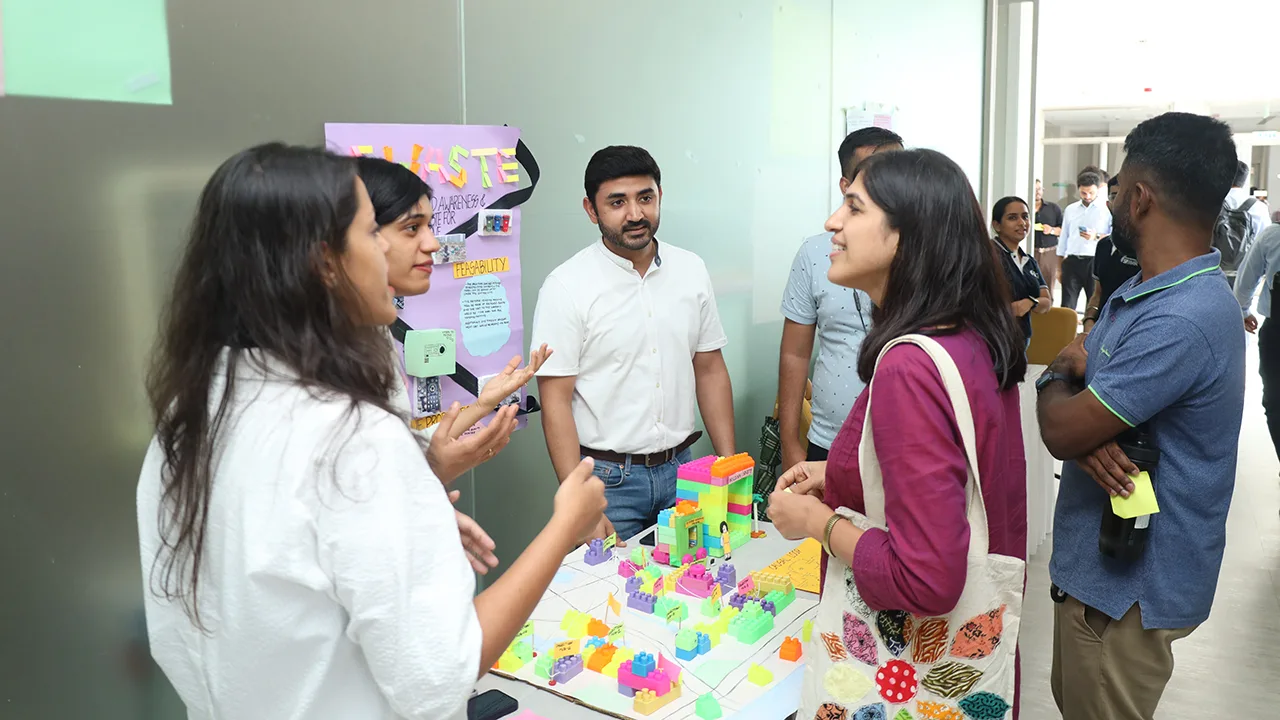
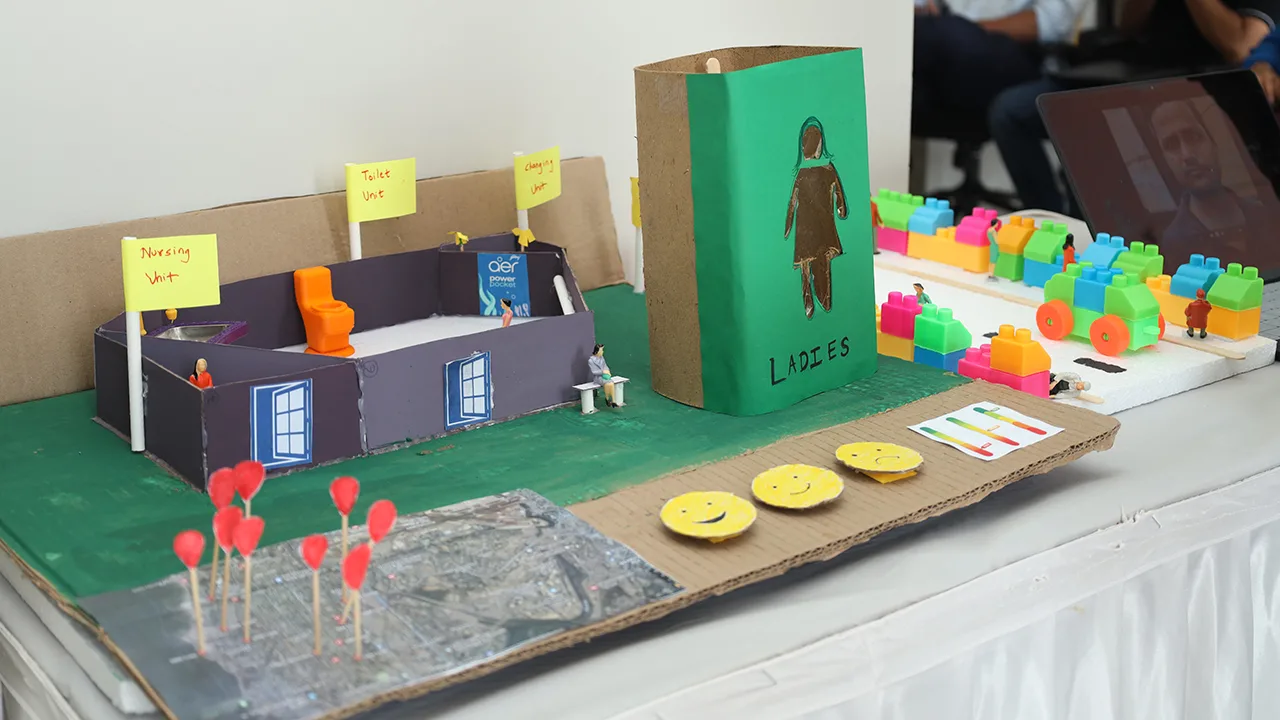
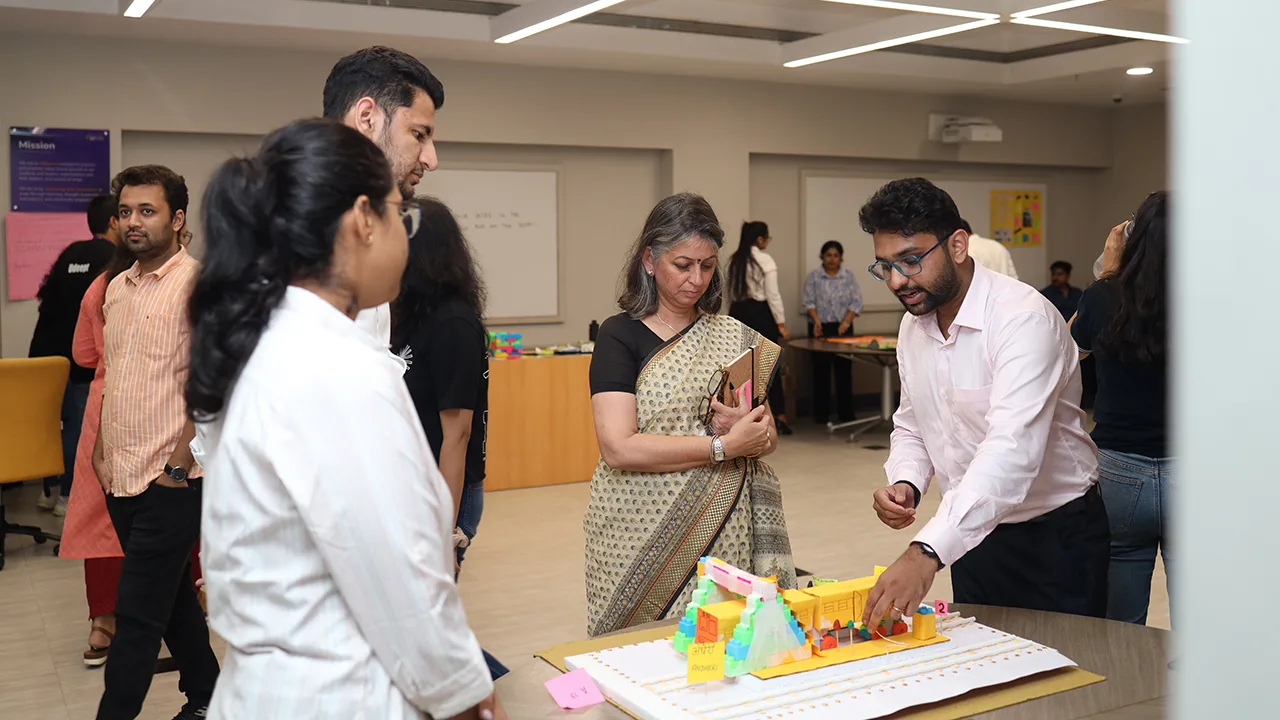
On June 13th, SPJIMR’s campus buzzed with creativity and innovation as participants of the Post Graduate Programme in Management (PGPM) and Global Management Programme (GMP) presented their solutions for a safer, more inclusive, and sustainable Mumbai at the Design Thinking exhibition. This event celebrated the successful completion of the Design Thinking course, a significant milestone for participants. This course, centred around innovative problem-solving and creative thinking, harnessed participants’ problem-solving and creative thinking skills and helped them develop unique solutions to address contemporary urban challenges.
Throughout their course, participants identified pressing city concerns and developed 45 innovative solutions. This year the batch focussed on the United Nations Sustainable Development Goal (UN SDG) 11 which aims to make cities and human settlements inclusive, safe, resilient, and sustainable. These included initiatives for waste management, preservation of historical sites, enhancing public transportation accessibility, and improving public safety.
Explore the diverse areas and real-world challenges addressed by each project.
| Category | Real-world issues addressed |
|---|---|
| Environment | Reducing environmental impact due to inefficient AC usage. |
| Heritage | How might we revive interest in our cultural heritage? |
| How to make Chhatrapati Shivaji Maharaj Terminus, a UNESCO World Heritage site more attractive tourist destination ? | |
| Market | How might we enhance the accessibility of Dadar vegetable market for customers. |
| People | Making the lives of elderly people easier by providing a safe and independent mobility solution. |
| How might we create a secure and engaging community for middle-class senior citizens who live with their children in metro/big cities and help them lead a self-reliant life? | |
| How might we build resilience in slum communities to mitigate future risks and enable faster recovery post disasters? | |
| Public Spaces | How to keep beaches clean, ensuring a safe and enjoyable environment for visitors while preserving the natural ecosystem? |
| How might we improve the road crossing system at T2 entrance of Western Express Highway to prioritise pedestrian safety and convenience while promoting error-tolerant road design, so that pedestrians feel secure during their daily travels? | |
| How might we design parks in Mumbai to be more inclusive and accommodating for people of all walks of life? | |
| The subways in Andheri currently suffer from significant safety, accessibility, and usability issues, discouraging pedestrians from using these facilities and increasing the risk of accidents and injuries. There is a critical need to develop a comprehensive solution that addresses these challenges, enhancing the overall pedestrian experience and ensuring their safety. | |
| How can we mitigate the impact of waterlogging for people in and around low-lying areas empowering them to tackle monsoon-related challenges with resilience? | |
| How might we motivate the visitors of Versova beach to prevent littering and make beaches appealing to tourists? | |
| How might we create and maintain a clean and tidy beach environment so that Mumbaikars can enjoy, relax, and take pride in city’s pristine beach spaces? | |
| Sanitation | How might we improve the public sanitation facilities for women shoppers in the flea market? |
| How might we improve the services in public washrooms to safeguard the health of women users? | |
| Services | How do we improve working conditions for vendors and the shopping experience for customers in Crawford market? |
| Slum residents in Mumbai face a constant threat of devastating fires due to their homes being constructed with highly flammable plastic coverings. These fires spread rapidly, causing injuries, loss of life, and displacement. The narrow alleys within the slum further hinder the ability of firetrucks to reach affected areas, leaving residents feeling helpless. | |
| How might we organise the private ambulance services market and integrate them with the centralised emergency services to ensure optimised utilisation of resources and seamless communication between the stakeholders? | |
| How might we improve the well being of the dhobis of Dhobighat of Mumbai? | |
| How might we reduce the physical effort required for the daily hawkers to transport their vegetable carts so that it reduces their fatigue and increases their overall wellbeing? | |
| How might we engage the community to empower slum residents by improving access to information about government schemes? | |
| How might we enhance the well-being of Mumbai’s slum dwellers by providing cost-effective solutions to improve ventilation and lighting in order to help them live a more sustainable and healthier life? | |
| Transport | How might we be able to make commute safer for women while accessing public transport in Mumbai? |
| How might we redesign to make Mumbai’s local train travel system more accessible for differently-abled commuters? | |
| How might we improve the experience for young parents commuting with kids through local trains in Mumbai city to make it safer and convenient? | |
| To design an innovative and sustainable integrated transport system for Mumbai that enhances accessibility and convenience for physically impaired individuals, addressing inadequate transportation options and creating a safer, more efficient, and user-friendly public transportation network. This initiative targets SDG 11 Point 11.2 and 11.6, aiming to contribute to the city’s goal of achieving sustainable development. | |
| How might we make bus travel more convenient , less stressful and dignified for people with special needs? | |
| How might we design an inclusive and accessible public transportation system in Mumbai that allows amputees to travel safely and independently ? | |
| Ensure a safer commuting experience for Mumbaikars travelling on roads. Focusing on the dangers of invisible manhole and pothole traps. | |
| How might we make access to local trains convenient for senior citizens so that they travel safely and independently? | |
| How might we enhance the transit experience for on-hire and employed drivers in Mumbai to improve their daily operations? | |
| Waste | Waste management with a specific focus on waste segregation while disposal and collection by municipality in public spaces in Mumbai . |
| How might we make the beaches more attractive and improve the current waste management practices at the beaches of Mumbai? | |
| How might we improve waste management systems for businesses and residents of the Oshiwara bridge area in order to reduce the flooding and plastic waste discharge into water bodies? | |
| How might we revolutionise the E-waste management experience for residents of Andheri West to maximise customer value and ensure sustainable and efficient E-waste disposal? | |
| Sustainable Floral Waste Management for Temples | |
| How might we spread awareness and effectively collect E-waste for recycling companies to improve e-waste disposal. | |
| Plastic waste management | |
| How might we design a sustainable e-waste material recovery system for households? | |
| Plastic waste management at Juhu beach and surrounding areas. | |
| How might we devise a solution to improve the waste management system for people living in the slums of Mumbai who do not have access to proper waste management infrastructure? | |
| Waste segregators in Mumbai, struggle with inadequate working conditions, lack of access to proper tools and safety equipment, and insufficient recognition and support from formal waste management systems. This leads to health hazards, reduced productivity, and limited economic opportunities. Our project aims to address these challenges by designing a simple feasible solution through the DT process, that enhances the working conditions, safety, and efficiency of waste segregators, thereby improving their quality of life. | |
| How might we resolve the issue of open garbage dumping in the Versova region to provide hygienic and dignified living conditions for the residents ? |
The SPJIMR community encouraged the participants by visiting the exhibition in overwhelming numbers. Each project was presented through detailed posters and prototypes, providing a tangible demonstration of their proposed solutions. The visitors shared their constructive feedback, valuable insights and their votes for the best solutions. The winning projects included:
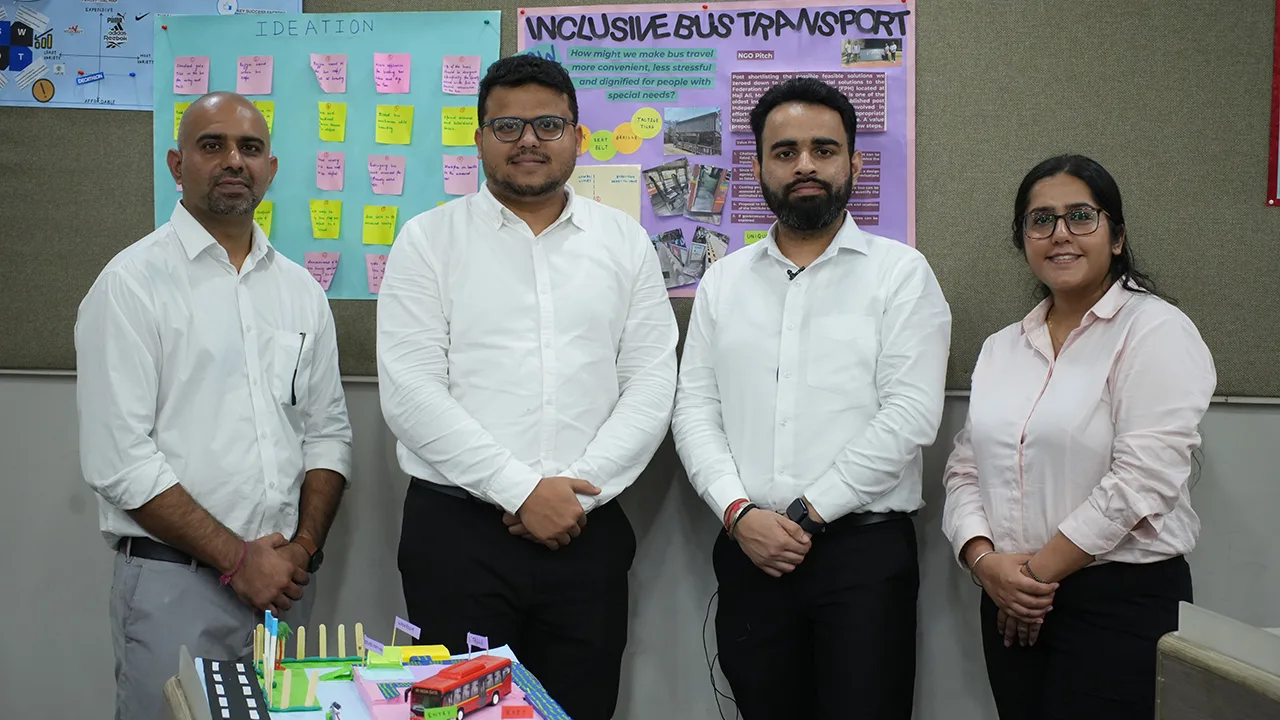 Winning team. Project: How might we make bus travel more convenient, less stressful, and dignified for people with special needs?
Winning team. Project: How might we make bus travel more convenient, less stressful, and dignified for people with special needs?
 Runner-up team. Project: How might we improve the public sanitation facilities for women shoppers in the flea market?
Runner-up team. Project: How might we improve the public sanitation facilities for women shoppers in the flea market?
The course faculty professors Lata Dhir, Bindu Kulkarni and Vidhula Venugopal commented, “The participants’ insights into issues faced by Mumbai’s common man and the underlying systems were clear in their problem framing and solutions. This understanding led to practical, effective and implementable solutions. The course aimed to equip participants with innovative approaches to solving complex problems.” This event is not the culmination of the Design Thinking course for participants. They will soon pitch their solutions to NGOs and corporations to find collaborators who will support and implement their transformative ideas.
Amey Patil, PGPM 2024 participant said, “Design thinking helped me to comprehend user needs while promoting creative and innovative solutions. The opportunity to take this challenge on with my team inculcated a sense of teamwork and collaboration. Prototyping provided practical insights, and systematic problem-solving ensured comprehensive outcomes. Overall, design thinking broadened my perspective on the societal impact of inclusive design choices.”
The event highlighted how design thinking can address real-world problems by integrating theoretical knowledge with hands-on practice. It resonated with SPJIMR’s commitment to find innovative solutions to shape a more sustainable future and impact society.

